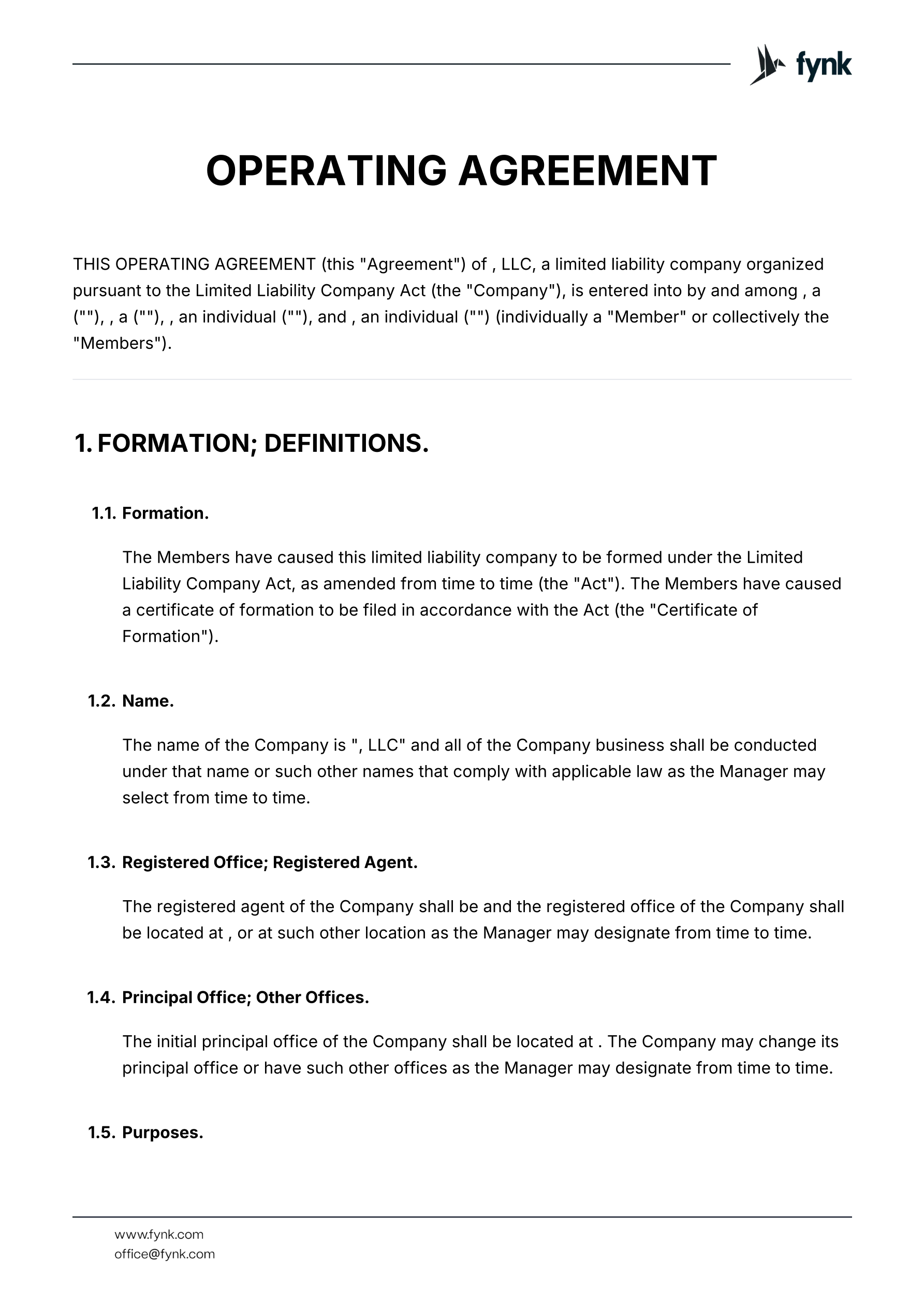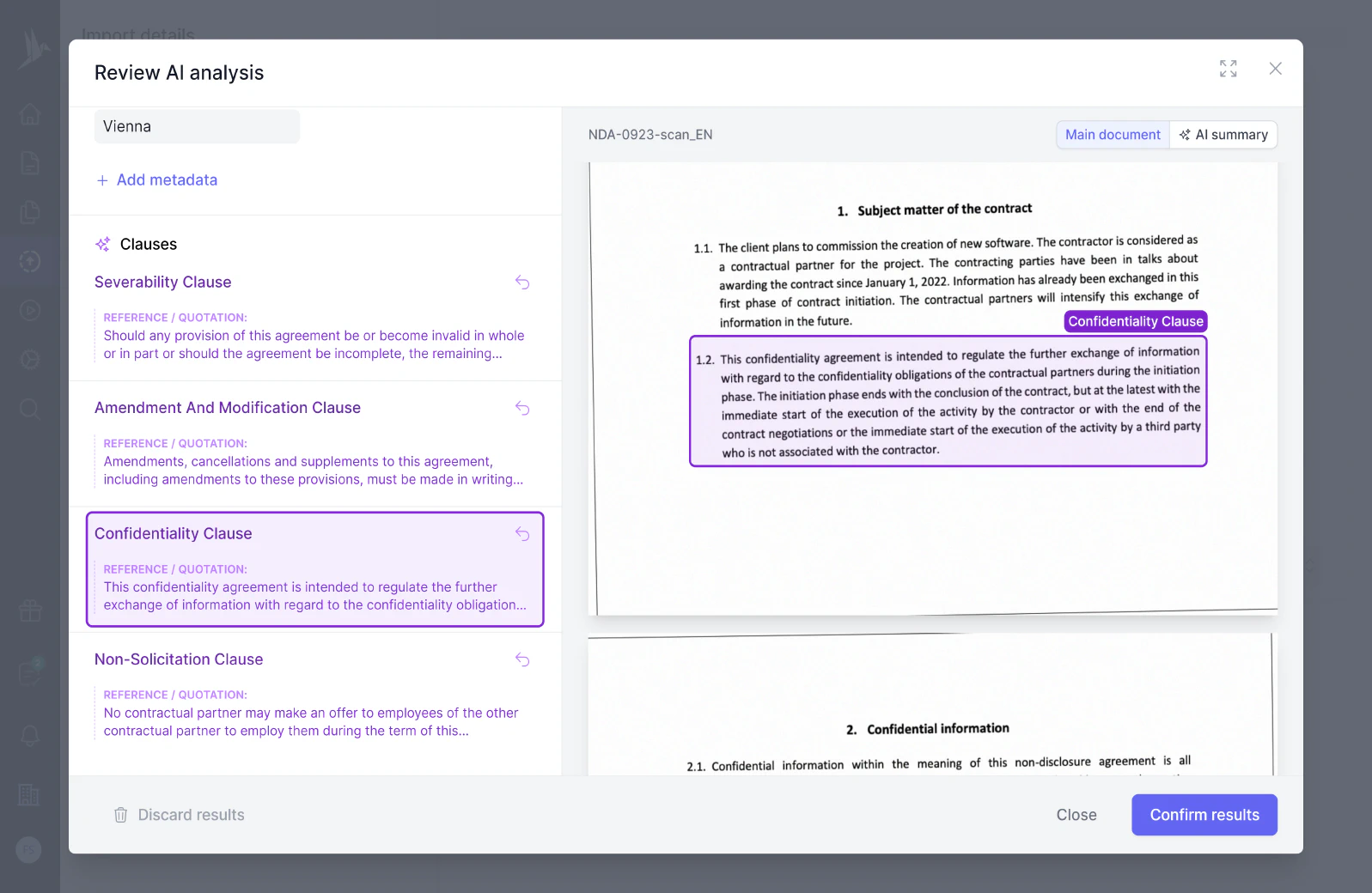
Operating Agreement Template for LLCs
A comprehensive operating agreement template defining LLC formation, management structure, member rights, and financial arrangements.
The "Transfer of Ownership" clause outlines the conditions under which ownership rights and titles of a property or asset are conveyed from one party to another. It typically details the specific events or criteria that trigger the transfer, any obligations the parties must fulfill, and the effective date when the transfer becomes legally binding.
The Company continues to work with the lender for the KEYS A and KEYS B loan pools on a consensual transfer of ownership of those hotels to the lender, and the Company anticipates that transfer could occur by the end of the year or early 2024. The original lenders previously transferred the loans to a securitization trust. Such trust, acting through its servicer, brought suit seeking the appointment of a receiver. It is not unusual that a receiver be appointed to facilitate a transfer of ownership of those hotels to the lender, and the Company is fully cooperating on a consensual transfer of ownership. Several media outlets have erroneously stated that Bank of America, Morgan Stanley, and Barclays have sued Ashford Hospitality Trust for breach of contract. This is inaccurate. Those banks are not party to the litigation seeking the appointment of a receiver.
1Delayed Transfer of Ownership of the Excluded PM Real Property. The Parties hereby acknowledge and agree that: (a)Notwithstanding anything to the contrary set forth in Annex D and Annex N of the Share Purchase Agreement, the Excluded PM Real Property shall be excluded from the Transferred Assets to be contributed to Italian NewCo as part of the Pre-Closing Reorganizations on or prior to the Closing Reference Date.
Transfer of ownership of boat by Transact24 Limited to Philip Meyer 1 Within 7 days after the date of this Agreement, the Company will procure Transact24 Limited to transfer to Philip Meyer at nil consideration the ownership of the Mercruiser motor boat, with the name "Graceaholic" and Licence No. XXX (the "Boat"), further details of which are contained at Appendix F to this Agreement. 2 The Boat shall be transferred to Philip Meyer in 'as-is' condition and Philip Meyer shall prepare the paperwork necessary to effect the transfer of ownership and bear any costs associated with the transfer of the ownership
TRANSFER OF OWNERSHIP 1 Date of Transfer. The transfer of ownership interests and related assets contemplated by this Agreement shall occur on the Effective Date. Upon closing, Buyer shall own and control the Asset exclusively and without restriction. 2 Deliverables. Upon the Effective Date, the Seller is obligated to provide the Buyer with all appropriately executed documentation related to the transfer and assignment process of the Company and the Asset. This includes, without limitation, documents pertaining to the transfer of membership interest and relevant intellectual property assignment records also as the access to codes, licenses, related documentation of the Asset and all activities related to the business of Asset.
Despite the transfer of ownership rights, the Company will sustain its autonomy and the Company will uphold its operational independence.
The Company shall transfer the ownership and title of the shares to the Investor on or before May 1, 2021, the completion date. The Investor shall not be responsible for any liability incurred by the Company before the transfer of ownership.
Transfer of Ownership. The ownership of the facilities shall be transferred to Purchaser concurrently with the Seller’s repayment of its loan from the financial institution.
Transfer of ownership The meeting approves the transfer of ownership of the assets and liabilities of the company being absorbed. The assets and liabilities of the company being absorbed include all assets and liabilities, all of which, without exception and without reservation, will be transferred under general title to the absorbing company as they appear from the statement of assets and liabilities of the company being absorbed as of today’s date, after completion of a prior partial demerger of the company being absorbed and as detailed in the aforementioned reports.
Assignability. In the event that the CCB does not approve the transfer of ownership to Purchaser, Purchaser shall have the right to assign its rights under this Agreement to a third-party or successor entity and to again submit the transfer of ownership to the CCB. The Parties agree to work together in good faith to effectuate the intent of this Agreement, namely, to transfer the ownership of Seller to Purchaser. In the event that Purchaser elects to assign its rights under this Agreement to another party or successor entity, Seller shall not be entitled to any additional compensation but Purchaser shall bear the expense of any subsequent transfer of ownership application that is submitted to the CCB.
Transfer of ownership refers to the legal process whereby the ownership rights of a particular asset or property are transferred from one entity to another. This process can involve both tangible and intangible assets and is governed by specific laws and regulations designed to ensure the smooth transition of rights, responsibilities, and risks associated with the asset.
You should consider transferring ownership in scenarios where a change of legal ownership is necessary or desirable. Common situations include:
Writing a transfer of ownership typically involves preparing a formal document that clearly outlines the terms, conditions, and specifics of the transfer. Key components to include are:
Example of a clause in a transfer document:
“The Seller hereby conveys and transfers all rights, title, and interest in and to the Asset, described as [Asset Description], to the Buyer in exchange for the payment of [Consideration], effective as of [Date].”
Contracts that often contain clauses related to the transfer of ownership include:
Each contract type will have its own specific requirements, but the core idea of formalizing the change in ownership remains the same.
These templates contain the clause you just read about.

A comprehensive operating agreement template defining LLC formation, management structure, member rights, and financial arrangements.

Stock purchase agreements are legal contracts used to transfer ownership of company shares from one party to another, typically in private company transactions.
Dive deeper into the world of clauses and learn more about these other clauses that are used in real contracts.
The "Transfer" clause in a contract outlines the conditions under which rights or obligations can be transferred from one party to another. It typically specifies whether consent is required for such a transfer and any limitations on the ability to assign responsibilities or benefits.
A transition payment clause outlines a financial compensation made to facilitate a smooth transition during organizational changes, such as mergers or shifting roles within a company. This payment aims to mitigate any disruptions or hardships experienced by individuals or groups affected by the transition.
A triple net lease is a type of commercial lease agreement where the tenant is responsible for paying not only the base rent but also all additional expenses associated with the property, including property taxes, insurance, and maintenance costs. This arrangement shifts most of the financial responsibility from the landlord to the tenant, making it an attractive option for landlords seeking a more passive investment model.
Try our AI contract analysis and extract important clauses and information from existing contracts.
< <
Fill out the form and we will get in touch with you to give you a personal, customized demo of fynk.
Greetings!
I'm Markus, co-founder of fynk. After you've submitted the form, I'll swiftly get in touch with you.
Also, right after you submit your details, you can pick a time that works best for you for our meeting.

